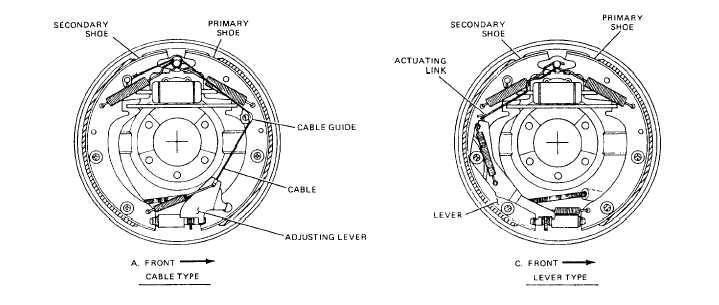CAR PULLS TO ONE SIDE
Be sure all other parts related to the front end are in good working order before placing blame on the brakes. Loose anchor pins or backing plates, improper lining, wrong adjustment, broken return springs, drums out of round, defective wheel cylinder, a binding disc caliper piston, or a clogged or crimped hydraulic line can all cause a vehicle to pull to one side during braking.
SOFT PEDAL
The most common cause for a soft or spongy brake pedal will be air trapped in the hydraulic lines. This problem may also be caused by a brake drum being cut too thin when it is being resurfaced, and by weak or old flexible brake lines.
BRAKES TOO HARD TO APPLY
his problem may be the result of grease or brake fluid on the lining, pedal linkage binding, a faulty master cylinder, or glazed brake linings.
BRAKES TOO SENSITIVE
Incorrect brake adjustment or brake lines or brake lining fouled with grease or brake fluid maybe the cause of sensitive brakes.
BRAKE NOISE
Before you determine a noise to be coming from the brakes, eliminate all other possible sources, such as body noise, loose front-end parts, loose lug nuts, and so forth. Brake noise may be coming from shoes scraping the backing plate, and also, loose brake lining (riveted), loose anchor pins, loose or weak return springs, and loose backing plates can all cause some sort of brake noise.
BRAKE FLUID LOSS
Brake fluid loss is a serious problem caused by loose fittings, leaking wheel cylinders, master cylinder, brake lines, and hydraulic hoses.
BRAKES DO NOT SELF-ADJUST
The brake drum must be removed to check the self-adjust mechanism. Worn or frozen star wheels, broken or dislodged adjusting cable, or broken hold-down clips will all cause the self-adjuster to malfunction. See figure 6-6 for an illustration of an automatic adjuster components list.
BRAKE WARNING LAMP WILL NOT GO OUT
If the brake failure warning lamp comes on, it is a signal that one of the two hydraulic circuits has malfunctioned. Check the entire system and after you

Figure 6-6. - Self-adjusting brake mechanisms.
Continue Reading